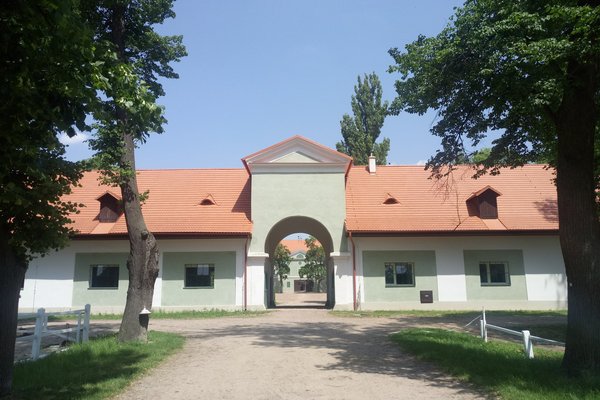Czechia
Kladruby nad Labem
The Landscape for Breeding and Training of Ceremonial Carriage Horses at Kladruby nad Labem was designed exclusively for the breeding and training of Kladruber horses, which were used in ceremonies by the Habsburg imperial court.
It is one of the most significant horse-breeding institutions in Europe and continues to function to this day. The extensive terrain has been modified following Classicist and Romantic principles and consists of three stud farms with pastures, avenues and irrigation canals.
Community Perspective: Try to get on a Stables tour (you may need to reserve online beforehand on a busy day); Clyde has described it and the three included farms well. Ian provided information on getting there on public transport.
Site Info
Official Information
- Full Name
- Landscape for Breeding and Training of Ceremonial Carriage Horses at Kladruby nad Labem (ID: 1589)
- Country
- Czechia
- Status
-
Inscribed 2019
Site history
History of Kladruby nad Labem
- 2019: Advisory Body overruled
- ICOMOS advised Referral to expand buffer zone and address mgt issues; Australia provided amendment to inscribe
- 2019: Inscribed
- Inscribed
- Type
- Cultural
- Criteria
- iv
- v
Links
- UNESCO
- whc.unesco.org
- Official
-
- nhkladruby.cz — National Stud at Kladruby nad Labem
All Links
UNESCO.org
- whc.unesco.org — whc.unesco.org/
Official Website
- nhkladruby.cz — National Stud at Kladruby nad Labem
Community Information
- Community Category
- Human activity: Agriculture
- Cultural Landscape: Clearly defined
Travel Information
Prague Hotspot
Recent Connections
-
Prague Hotspot
1h train to Prelouc plus short taxi to … -
Built in the 16th century
The Imperial Stud Farm was established … -
Horse Stables
Connections of Kladruby nad Labem
- Geography
-
-
Elbe Basin
located in the Elbe Lowland (AB ev)
-
- Trivia
-
-
Modelled after
Prague's Průhonice Park (AB ev)
-
- History
-
-
Habsburgs (Austrian)
The estate entered into the possession of the Habsburgs in 1563 and obtained from 1579 onwards the status of Imperial Court Stud Farm. (AB ev)
-
- Ecology
-
-
Oxbow lakes
The Kladruby nad Labem stud farm occupies a flat terrain, still preserving the remains of oxbow lakes (AB ev)
-
- World Heritage Process
- Constructions
- Timeline
-
-
Built in the 16th century
The Imperial Stud Farm was established in 1579 (AB ev)
-
- WHS Hotspots
-
-
Prague Hotspot
1h train to Prelouc plus short taxi to Kladruby nad Labem
-
News
No news.
Recent Visitors
Visitors of Kladruby nad Labem
- Adrian Turtschi
- Alexander Lehmann
- A. Mehmet Haksever
- Argo
- Astraftis
- Atila Ege
- Bin
- Bropyk
- Carlo Sarion
- Carlos Sotelo
- Christoph
- Christravelblog
- Claire Bradshaw
- Clyde
- Csaba Nováczky
- Dagmara
- Daniel Chazad
- David Berlanda
- Dimitar Krastev
- Dolemite92
- Dorejd
- Elis
- Els Slots
- Erik Jelinek
- Errol Neo
- Ertai
- Fan Yibo
- Frederik Dawson
- FS
- George Gdanski
- Harry Mitsidis
- Hubert
- Ian Cade
- Ivan Rucek
- Jakob F.
- Jakubmarin
- Jana and Matt
- Janina Lehmann
- Janos
- Jarek Pokrzywnicki
- Jay T
- Jezza
- jonas
- Jonas Kremer
- Jonas Martinsson
- jonathanfr
- Joyce van Soest
- KarenBMoore
- Karito Vies
- Kasia M.
- Kurt Lauer
- ljowers
- Loic Pedras
- Luboang
- Lucio
- Ludvan
- Luis Filipe Gaspar
- Maciej Gil
- Martin
- Martina Rúčková
- Matejicek
- Mohboh
- nan
- Nihal Ege
- Olli-Pekka Turunen
- Patrik
- Paul Schofield
- Philipp Leu
- Philipp Peterer
- Piotr Wasil
- Purrfect
- Rafał Kałczuga
- Ralf Regele
- Randi Thomsen
- Roel Sterken
- Roger Ourset
- Roman Bruehwiler
- Roman Raab
- Sandmann15
- serghei.belous
- Stanislaw Warwas
- Stijn
- Svein Elias
- Szucs Tamas
- Taotao Chen
- Tarquinio_Superbo
- Thomas Buechler
- Thomas van der Walt
- Thorben
- tony0001
- triath
- Tsunami
- Valentina
- VB73
- WalGra
- Wojciech Fedoruk
- YaroMir
- Yevhen Ivanovych
- Zoë Sheng
Community Reviews
Show full reviews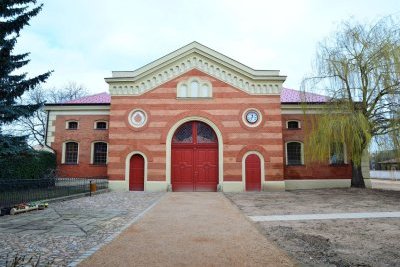
I'm not a horse lover, but Kladruby is interesting. I recommend climbing the lookout tower and looking at the landscape. It's flat, so you can see quite far. I took the carriage tours and it was interesting. I skipped the castle and stable tours - I'm guessing standard. Everything is repaired and nice from the outside. Otherwise, Kladruby was part of a cycling trip, which is probably the best way to get to know the local landscape. I understand that it's a problem for foreign visitors to get a bike. I don't know how many horses they keep in Kladruby, but it was really nice to see the horses grazing freely in the meadows. We were also lucky to see herds with foals. It's interesting to see adult white horses and black or brown foals. Foals only become white when they are adults (around 7 years old).
Keep reading 0 comments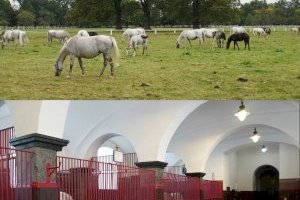
Horse breeding on the World Heritage List? I am not into horses and equestrian sports, and when I see the Fiakers at St. Stephen's Cathedral in Vienna, I doubt that the horses have much fun drawing the tourists through the city. It would be healthier for both if people would walk. So I was not very excited when Kladruby nad Labem was inscribed as a World Heritage Site in 2019. But in October 2021 I set out to complete the Czech Republic again and combined this with a revisit to Prague.
I arrived in Kladruby around noon on a weekday. A castle tour had just started, but I decided to wait another two hours for the guided tour to the stables. After all, it's about horses and I have already seen enough interiors of castles.To fill the time, I hiked the circular trail as suggested by the lady at the information centre. She also gave me this map. The hike is about five kilometres long and leads along pastures, meadows, and irrigation canals and through the avenues that were built for training of the carriage horses. A dozen information boards explain the cultural landscape. Here I could also admire the grazing horses at leisure (upper photo). I was surprised that not all the horses were white, especially the foals were grey and almost black. Later I learned that the pure white colour only develops when the horses are grown up.The tours take about an hour and are only …
Keep reading 0 comments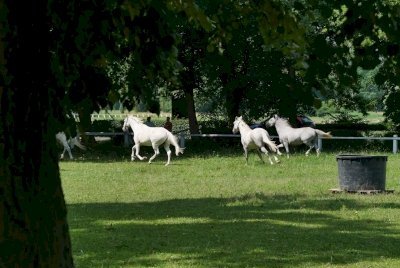
I know people who are into horses. Frankly, I am not one of those, that is unless served as a plate of pìcula 'd caval in Piacenza; simply delicious. Still, watching the horses playing on the paddocks around Kladruby was a nice experience. The whole area around the estate has been devoted and transformed to breeding horses and I simply could not stop taking pictures from all angles of the horses.
Historically, the estate was owned by a nobleman before being taken over by the Habsburg king when the noble ran into money problems (see Clyde for details). The Habsburgs bred two sorts of horses in Kladruby. White ones for earthly processions. Black ones for the church. To this day the estate is operated and has kept its original shape. Personally, I started to wonder about the practice of boxing horses, i.e. keeping them in rather small cages. Apparently, there are equestrians who feel it's a good option. To me, naively it felt wrong.
While I would rate my visit and the experience rather high, there are a few concerns I have with the OUV of the inscription.
- You take away the horses and this goes really quickly down 1 star. As such, it's on the border (or past the border) of being an intangible cultural heritage.
- This is a royal estate raising horses for royal and church rituals. It's not really representative of the general business of breeding work horses or war horses in …
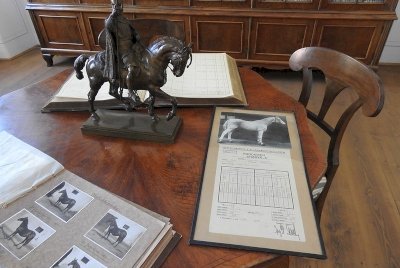
I’ve never liked horses. I’ve never had the common young girl crush on those stereotypically ‘noble’ animals. As an adult, on a group tour to Turkmenistan, I remember an obligatory stop at a breeding farm of Akhal-Teke horses which bored me within minutes. So the appearance of the horse farm of Kladruby nad Labem on the World Heritage List last year did not give me great joy. But well, you gotta go to every single one WHS and the subject in this case at least is quite original in the WH context.
I did look forward to the day trip as a whole though, starting the small expedition by public transport to the Czech countryside fresh off the plane. Having learned from previous reviewers, I visited on a Friday to make the best of the railway connections. On weekdays there are 2 trains per hour between Prague Central and Recany nad Labem, the closest station to Kladruby.
It was a gorgeous sunny day, which proved to be a blessing for the final 3km roadside walk. There are white-blue-white markers painted on trees to show the way, but it is easy anyway: just go straight ahead from the station. The first 1.5km of the walk is extremely boring, only when you cross the Elbe river (Labe in Czech) the landscape becomes more interesting. There are pastures bordered with white fences in which the horses run their laps every now and then - but I saw only a few of …
Keep reading 0 comments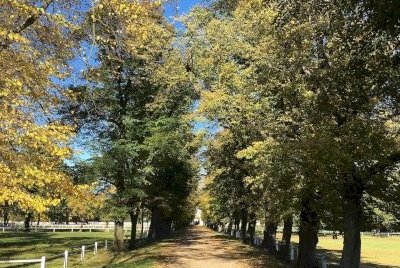
As interesting as a horse farm can be, if this appeals to you, there probably aren’t many better places to visit, it is well maintained and thoroughly explained (in Czech unless otherwise arranged).
For me the appeal was rather slim, I was merely doing my duty and visiting on an unseasonably warm lovely Saturday afternoon in October 2019. The details have been covered in the other reviews, but I will say the landscape around the farms were pleasant to stroll through, seeing mares and foals gambolling away in the distance.
My visit was fine, but this is about as far removed from my interest as it is likely to get.
The highlight was the welcome and help given by the staff, mostly only Czech speaking, though one lovely guide spoke excellent English. She finished a tour on the dot to drive me to the station in a rush to get my train (more on that below).
(Site 2: Experience 5)
Visiting by public transport:
The nearest train station is at Řečany nad Labem which is about 3km south of the main stables. On weekdays there are connecting busses, however, the station one stop east is Přelouč could provide a better connection, so check the full itinerary at idos.cz to find out where is best to get off there train. These give you a chance to rejoice in getting acquainted with the Czech language’s unique and devious letter: Ř
If you arrive at …
Keep reading 0 comments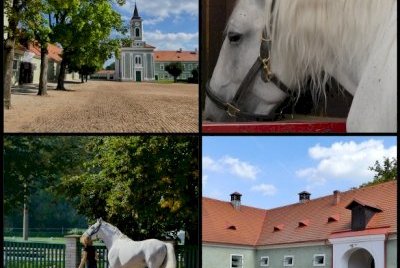
I visited this recently inscribed WHS in Summer 2019. Once a settlement for “timber logging” (in Czech klady rubaji), Kladruby provided ideal conditions for horse breeding, thanks to the cut-down floodplain forest.
At the time of Charles IV, the village of loggers, horse breeders and traders, administered by monasteries, flourished and a rectory and church were founded. The loggers gradually became squires, and their coat of arms from the early 15th century in fact shows a horseshoe. Yet this growth didn't last for long, as both the rectory and the church were destroyed during the Hussite Wars. By 1500, after a period of frequent changes of owners, Kladruby was bough by William of Pernstein and consequently attached to the large Pernstein dominion of Pardubice. The Pernstein family maintained the local tradition of horse breeding and founded a horse sanctuary, as documented in 1522, where horses were bred half-wild. The history of old Spanish and old Italian horse breeds in Kladruby which survived till present times began in 1552, when Jaroslav of Pernstein, following the fashionable trends of his times, brought the first horses of Spanish blood to the sanctuary. The year 1579 is an important milestone as by the degree of Emperor Rudolf II, a royal stud was established in the sanctuary.
Around 250 White Kladrubers, as they are called, are bred at Czechia's only national stud farm in Kladruby nad Labem. Black Kladrubers are bred in a secondary farm nearby in Slatinany. Written records of Kladruby date …
Keep reading 0 comments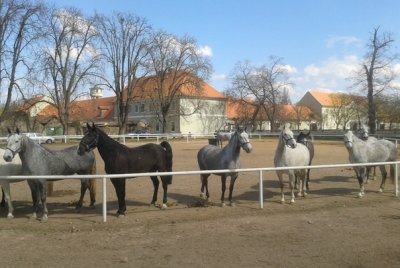
Though I like nature, horses or animal farms have never been a target of my interest. The reason I visited Kladruby nad Labem this weekend was the nomination of “the Landscape for breeding and training of ceremonial carriage horses at Kladruby nad Labem” as WHS this year. The stud farm is considered as one of the oldest in the world (it celebrates 440 years in 2019!) with uniquely preserved function and structure.
The public transport to Kladruby nad Labem is rather infrequent, there is direct bus connection with nearby town Přelouč only during weekdays. So, I travelled from Prague by train to village Řečany nad Labem (quite nice place with interesting Romanesque church), which is on the main train route from Prague in direction East. Fast trains do not stop here and one has to change in Kolín for local trains. From Řečany there is marked blue trail from the railway station to Kladruby along local road - it is ca 3-4 km long and it takes around 3/4 hour of fast walking. As the nominated area is quite large, you enter the core zone soon just after crossing the bridge over river Labe (Elbe).
Soon, it was also clearly evident who is at home in this landscape as indicated by all senses - by smell first of all! All roads and pastures in the area are flanked by white fencing, and one can spot Kladruber breed horses quite frequently. The landscape, though flat, is quite picturesque with …
Keep reading 0 comments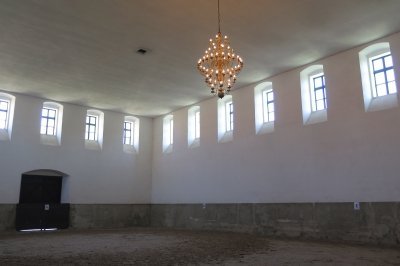
A stud farm, not handsome guys, but instead horses for breeding. I was really looking forward to something else. I think Czechia has the best variety when it comes to sightseeing in such a small area, from churches and nature, old cities, mines, beer, castles. There are tours in Czech on the hour between 10:00 and 16:00. I'm unclear what the other parts on the menu were but I think you can see certain parts of the place unguided with individual entrance tickets. For non-Czech speakers you are given some text in several European languages. They said the English one is the only one updated to the new tour though. I had to get used to "English text" when doing tours in Czechia anyway so this was no surprise. The stud farm is only reached by car and I doubt they get many foreign tourists before this has a WHS title.
The tour goes through a slow pace but I was totally lost trying to use the text. If this was updated to the new tour it didn't match. There was also no indicator where we currently are and the tour guide couldn't speak a single word of English. I tried to find out if we can see the foals and I think the answer was that they are in a separate field with their mothers. So I basically tried to read the entire four page text quickly and tried to match whatever I can with the rooms. The easiest …
Keep reading 0 comments
